I was reading about the LM35 and i found this, he suggested that i must use shielding over long distances, which makes sense, but then he said i must add a capacitor and a resistor, why did he add them, is the shield considered a capacitive load?
and how will this solve the problem, i tried searching RC damping and all the results were about mechanical engineering.
And about the circled connection, it seems like a connection from the shield to the ground which is necessary, but i already did it on the other side of the shield ( the side of the power supply) should i do it again?
In other words, should the shield be connected to the ground twice or once is enough?
why did he add them, is the shield considered a capacitive load?
and how will this solve the problem, i tried searching RC damping and all the results were about mechanical engineering.
And about the circled connection, it seems like a connection from the shield to the ground which is necessary, but i already did it on the other side of the shield ( the side of the power supply) should i do it again?
In other words, should the shield be connected to the ground twice or once is enough?
- 223
- 1
- 4
- 10
-
http://electronics.stackexchange.com/questions/33228/with-shielded-twisted-pair-cable-do-you-ground-one-end-both-ends-or-neither-e this answers your question about ground. I know I've seen a question recently that involved both of your questions but can't find it – I. Wolfe Jan 28 '15 at 17:22
-
You should probably be looking at the datasheet and not the link you shared:http://www.ti.com/lit/ds/symlink/lm35.pdf page 9 answers your question on why/when the capacitor/resistor are needed – I. Wolfe Jan 28 '15 at 17:32
-
@I.Wolfe from what i understood i should ground it once but didn't understand which is better , near the arduino or near the sensor, and the datasheet didnt specify if the shield should be considered as a capacitive. – user28324 Jan 28 '15 at 17:37
-
ask yourself which one leads back to chassis/earth ground, and that will give you your answer (If the sensor gets its power from the Arduino, then obviously the Arduino is the path to earth ground). Yes, there is a wiring capacitance. Page 9 talks about how to deal with it, and in what cases the resistor/capacitor are needed. – I. Wolfe Jan 28 '15 at 17:41
-
so i should ground it from the end near the power supply , right? – user28324 Jan 28 '15 at 17:44
-
Yes, If you read Kortuk's answer on the question link I provided, he talks about where to attach the shield to ground and expands some in the following comments. A chassis would be a metal enclosure your board goes in, or something similar. For instance I work on carts, and the metal frame of the cart is the chassis. If you just have a board attached to a supply, there's no chassis so go to board ground or preferably to the power supply ground – I. Wolfe Jan 28 '15 at 17:50
-
honestly, i didn't understand what a chassis is :D thanks – user28324 Jan 28 '15 at 17:53
1 Answers
For a remote passive or a device that is solely powered down the cable, the shield should be tied to ground where it has most impact on preventing noise getting into sensitive input circuits. The noise comes from the long length of cable and the shield/screen acts like a faraday cage to this noise and grounding this faraday cage right at the receiving end i.e. at the input receiving stage takes all this noise to ground. This is the best place but there are exceptions.
If you grounded the shield elsewhere (such as at the sending end) and left it unterminated at the receiving end you will get a noisy signal into your input circuit. Of course the dilemma occurs when your remote device is earthed. See this below: -

To avoid ground currents from other pieces of equipment contaminating the cable with unwanted earth currents you should use the capacitor at the receiving end - this attempts to minimize low frequency AC power currents circulating through the cable whilst giving a decent protection against RF induced noise.
Taken from here - Analog devices MT-095, EMI, RFI, and Shielding Concepts.
Regards the LM35's ability to drive into capacitors (coax cable or normal capacitors), there is a range of capacitance where the device will become unstable so you can either feed the output into a cable via a series resistor or shunt the output with a much larger capacitor in series with a resistor. In fact most op-amps exhibit this behaviour.
- 434,556
- 28
- 351
- 777
-
so what i understood here is that i have to ground it and the receiving end ( the arduino) but what about the RC damper, can i put it at the receiving end or it must be before the shield near the sensor as illustrated? – user28324 Jan 28 '15 at 20:16
-
The LM35 doesn't like (as most linear chips) its output driving a capacitive load. That load is the cable attached to the LM35. Placing it at the far end might work providing it's the 75 ohm and 1uF but it's a little less-easy to see how effective this might be. – Andy aka Jan 28 '15 at 21:44
-
do you have any idea at what length i must start shielding, i will be using a 30 cm wire, does that have to be shielded? – user28324 Jan 28 '15 at 21:57
-
0.3 metres!?! - I thought you were talking minimum ten metres, maximum 1000 metres. Dude, just try it without a shield and see what happens. – Andy aka Jan 28 '15 at 22:48
-
i will, i am a freshman engineering school so if there is something below a beginner that would be me :D ; i believe anything on the internet until i try it, the guy on the website 1 meter needed ( 1 needed was the plan , just changed it to 30 cm) shielding . – user28324 Jan 28 '15 at 23:51